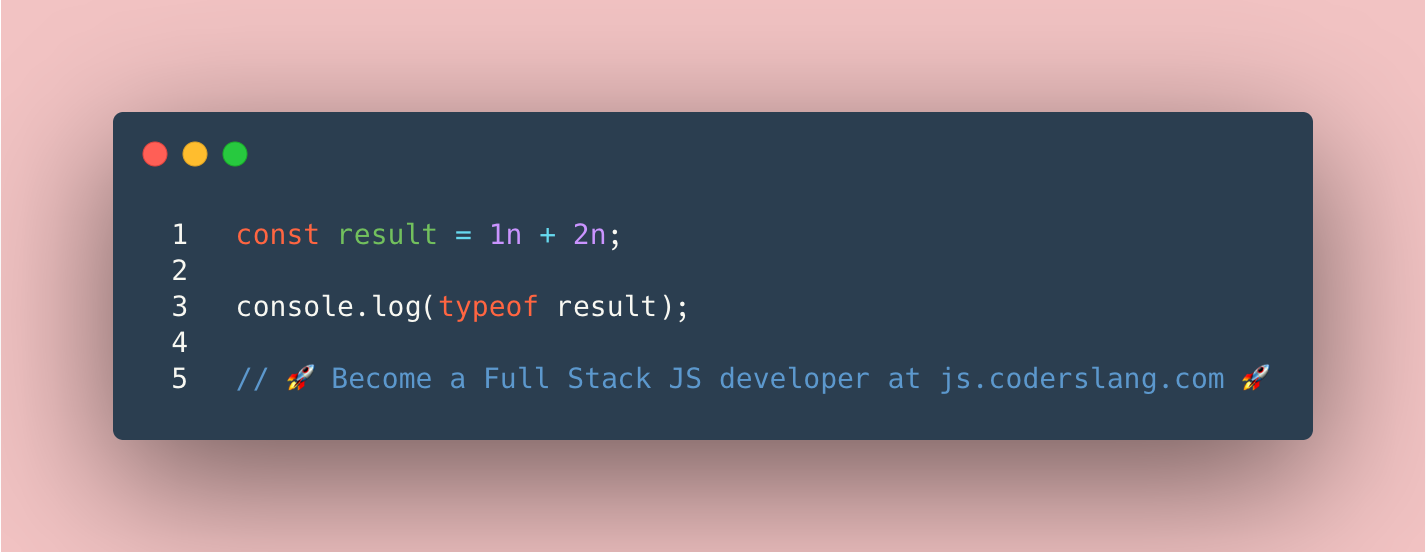
What happens if we add an n suffix to a regular number in JavaScript? What’s the output?
.
.
.
.
.
.
.
.
.
.
.
.
.
.
.
.
.
In the first line we try to add two numbers. These aren’t regular numbers, but rather two instances of BigInt — special objects that are used to safely represent numbers bigger than Number.MAX_SAFE_INTEGER.
There are two ways to create BigInt:
-
add a suffix
nto any number in JavaScriptconst big = 1000000n; // 1000000n -
call the constructor
BigInt(val)and pass in a numerical valueconst bigN = BigInt(123) // 123nThis value doesn’t have to a number. I can be a string.
const bigS = BigInt("234") // 234nYou can also use hex and binary notation.
const bigHex = BigInt("0xffffffffffffffff") // 18446744073709551615n const bigBin = BigInt("0b111") // 7n
The BigInt numbers behave just like the regular ones. By adding 1n and 2n we get 3n. This is BigInt as well, and typeof 3n returns a string bigint, which will be logged to the screen when we call console.log.
ANSWER: The n suffix turns a regular JavaScript number into a BigInt . The string bigint will be logged to the console.